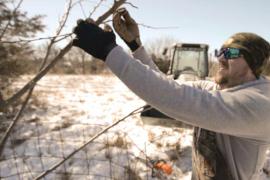There are many wonderful, wild edible plants scattered across this continent. Pick up a foraging book or take an edible plant class, and you’ll see a multitude of plants that can turn into a meal. But this bounty doesn’t mean that every plant in the wild is our friend. Every region has numerous plants that are dangerous (even to bump into), and you’ll want to pay close attention to avoid touching these toxic species.

This large member of the carrot family may have foragers thinking they hit the wild carrot jackpot, but in reality, this is a plant that is harmful to even touch. Giant hogweed (Heracleum mantegazzianum) is a European native that is now considered a noxious weed by the federal government. This plant can reach heights up to 14 feet tall, and hairy stalks and white flower clusters closely resemble the wild carrot (also known as Queen Anne’s lace).
Giant hogweed is surprisingly dangerous, as it is covered in a compound that causes a severe light-sensitive skin reaction. Within 48 hours of contact, the plant causes dark, painful blisters that form after exposure to sunlight. These blisters go deep and result in scarring can last up to six years.
But wait, there’s more! Getting the “sap” in your eyes can cause permanent blindness. Stay away from this pretty…





